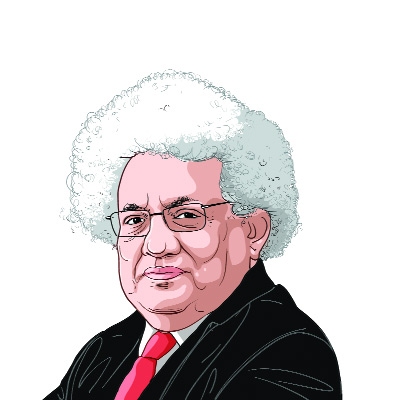Opinion Same difference
China has been a united country with a single central authority throughout its history, with short periods of regional resurgence.
China has been a united country with a single central authority throughout its history, with short periods of regional resurgence. India has been the other way around. It has had short periods of strong central ruleempires as they were calledMaurya,Gupta,Mughal etc. Even imperial rulers had to seek collaborators who were only nominally their subordinates. Eventually these collaborators would grow big and the empire would break up.
This history made Indian nationalism fearful of weak central governments. The idea was that independent India would be strong and united; it led to a Constitution which was highly centralised. But unlike the old empires,new India was a democratic republic. What passed for imperial rule was exercised by a political party,the only one with any legitimacy from the independence strugglethe Congress Party. For Congress,unity meant control from the top and rule by a single party. Nehru hated the idea of linguistic states but had to concede them. Even so the Congress could be in power everywhere and assure Indias unity. The first non-Congress government in Kerala was dismissed disgracefully using sinister tactics. Any sniff of difference was suspected to be a bid for disunity.
Now sixty-four years on,we see a new confident India emerging. Unity does not have to mean uniformity or a single party rule across India. The election results show that the winning formula is a powerful regional leader. The model is of regional strength,even autonomy,but without any desire for independence. Regional strength does not have to mean national disunity.
Tamil Nadu was the first state way back in late 60s which displaced the Congress by its own local party which soon became two parties. Congress has played second fiddle ever since in Tamil Nadu. In Kerala,the Congress is locally no different from the Communists as far as governance or political culture is concerned. Now,Mamata Banerjee has shown that West Bengal will also be like Tamil Nadu. There will be a regional party of Bengal which will rule without much of a role for the Congress. In Bihar,Nitish Kumar is his own boss without a national party hovering over him and Narendra Modi does not have to listen to his national party. In Assam,Tarun Gogoi was clever enough in his victory speech to give credit to Sonia Gandhi but that is diplomatic. He too will be a regional satrap.
This is the way a true federation should work. India is as large as Europe and there is no reason to expect uniform political cultures. Local interests,local class structures and local geography determine the shape of politics. The Centre has the financial wherewithal to cement its hold on the States but it can do so without discriminating against governments of a different party from that at the Centre. The big struggle for establishing proper rules for federal finance were fought in the 80s and 90s by the West Bengal Left Front government against the Congress rule at the Centre. Now the rules are known and adhered to. Central help depends on good governance and good quality projects. There is still a bit of politics at election time when non-Congress governments are accused of not spending central funds while the governments demand more assistance. But eventually it all works out.
There are of course problems with party political culture. Congress remains far too centralised in its leadership and its culture. All PCC chiefs are chosen by the president,not elected locally. Sadly,other parties are copying the Congress. Regional parties aspire to national presence as the BSP has shown. Now,Trinamool has similar national aspirations. This way lies trouble because the national party is just the dream of the regional leader,not a natural growth from below.
Eventually,these regional parties grow too big and fail to win elections at the national level. They shrink back into regional existence. There then remains only the one national party or two. The cycle of centralisation and decentralisation resumes. Can we not get out of this rut?





